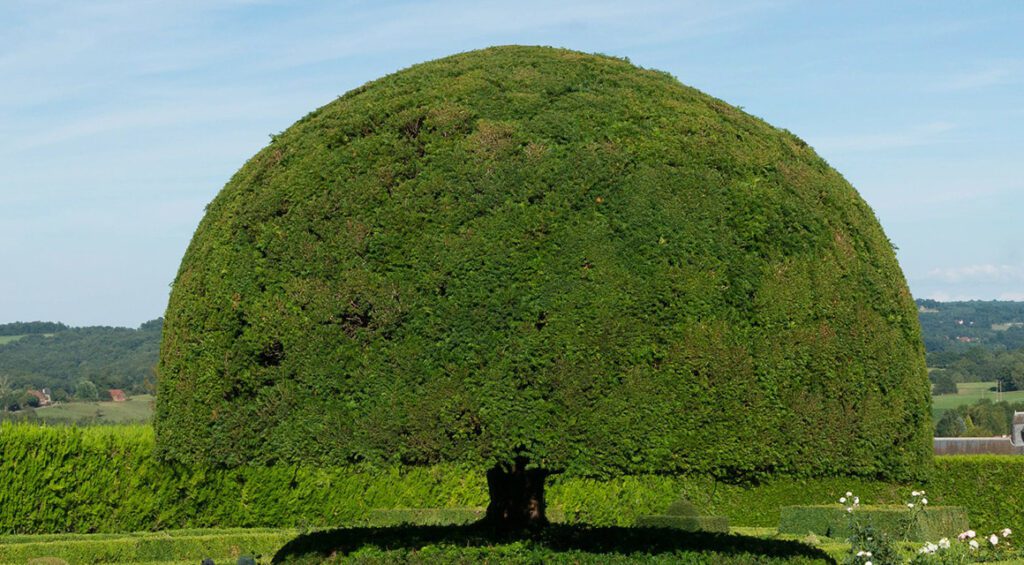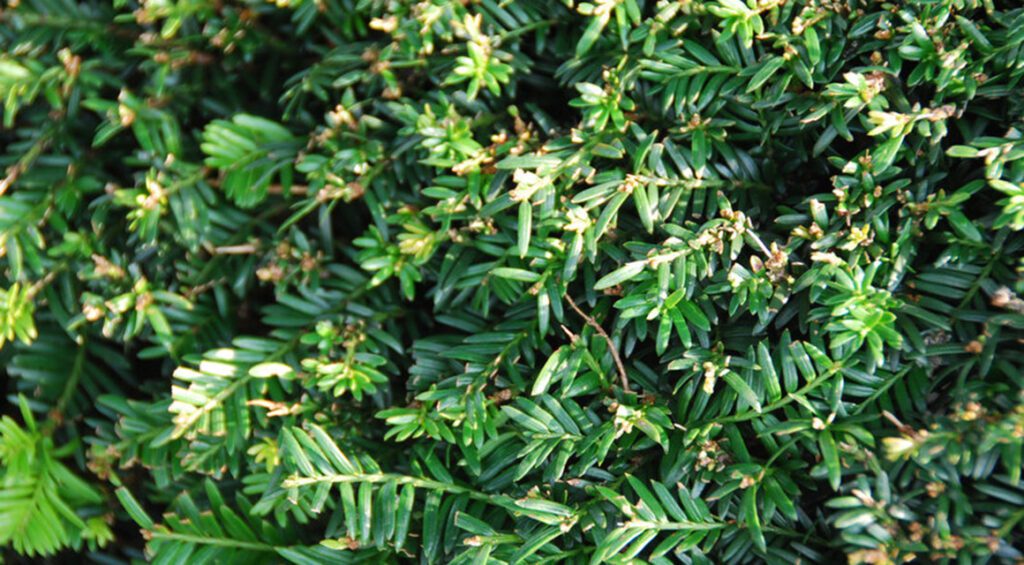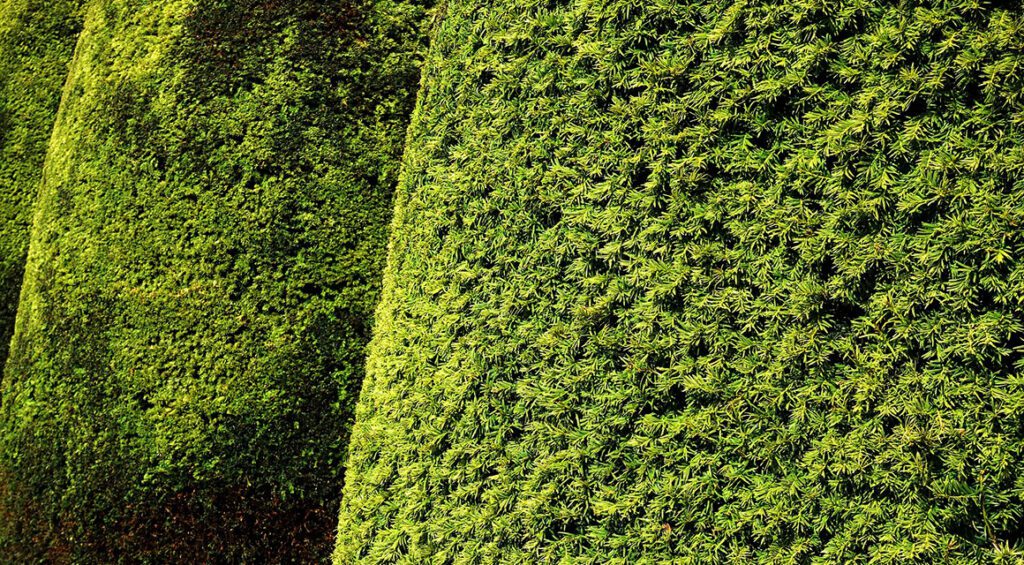One of the most impressive hedge plants is yew. By the way, there are different varieties of yew, and then there are also different cultivated forms. However, they are all exceptionally good as hedge plants and therefore suitable for the formation of hedges. For example, some varieties look better when planted as individual plants in the garden.

Contents
What varieties are suitable for a yew hedge?
Conifers are generally suitable for formal hedges, but the yew, due to its slow growth, is a real secret tip if the maintenance of your conifer hedge should be time-saving. This is because yew only grows around 15 and 20 inches per year. So, a yew hedge won’t quickly look messy or unkempt if you trim it once or twice a year. In addition, yews are evergreen hedge plants. So, yew hedges ensure that you have a pretty, compact, green garden wall for twelve months of the year. Mostly then they are low hedges in the front garden, but in the long term they can also grow into a good privacy hedge.
Why do garden stores and online hedge plant web stores only ever offer two to three yew varieties? It’s because the Taxus baccata and Taxus media are the best yew varieties for a hedge. The Taxus media is available as a male variety (Taxus media ‘Hillii’) and a female variety (Taxus media ‘Hicksii’). They are so well suited for hedge formation that other cultivars immediately fall away. All three varieties have compact growth, which means they always make a neat impression after tight pruning. Taxus baccata, which occurs naturally in Europe, and the cultivated Taxus media are particularly hardy varieties.

What are the differences between different varieties of yew?
Although the Taxus baccata and Taxus media are good hedge plants, there are still differences. If you prefer a yew hedge in the garden, which over time has reached eye level and is opaque, then you should take the Taxus baccata. This is because with the Taxus media, there is a risk that the branches will fan out due to the weight of snow or rain, for example, when the hedge reaches a height of about six feet. This is not at all good for the formal appearance of your hedge, so Taxus media should only grow to around 1.5 meters in height, for example as a low garden border in the front yard.
The yew berries, produced in late summer, also have special ornamental value. They stand out, of course, because of their bright red color. This color is a stark contrast to the dark green yew needles. Do you like it? Then plant the Taxus media ‘Hillii’ and the Taxus media ‘Hicksii’ intermingled in your garden so that the male plants can pollinate the female plants. If that works, the Taxus media ‘Hicksii’ will have wonderful berries in the fall. But be careful of children and pets that may be near such hedges, because the Taxus is poisonous, except for the pulp of the berries.

Tips for optimizing your yew hedge
Have you found the best yew variety? Then you can enjoy a hedge that will look pretty and green for a long time. After all, yews can live to be almost a thousand years old if properly cared for and grown in the ideal garden soil. However, your yew hedge should always grow in a well-drained garden soil to avoid slug basidia (rotting of the roots) caused by waterlogging. Otherwise, there is little that can go wrong when trimming a yew hedge. The hedge will look less formal if you don’t trim it, but that’s not a problem further on, as radical pruning down to the old wood is also fine with yew.
Ideally, you should trim your yew hedge twice a year. Once in May or June (before the longest day of the year) and then again in early autumn. Do you want the yew hedge to protect your privacy? Then wait to trim the top until your hedge reaches eye level. However, the front and sides of the hedge can already be cut straight back. It may take a while to reach the desired height, but with a two-meter high prefabricated hedge, everything will go much faster right away. However, a large prefabricated hedge is quite heavy, but this then also immediately stands a high garden boundary in the garden.

